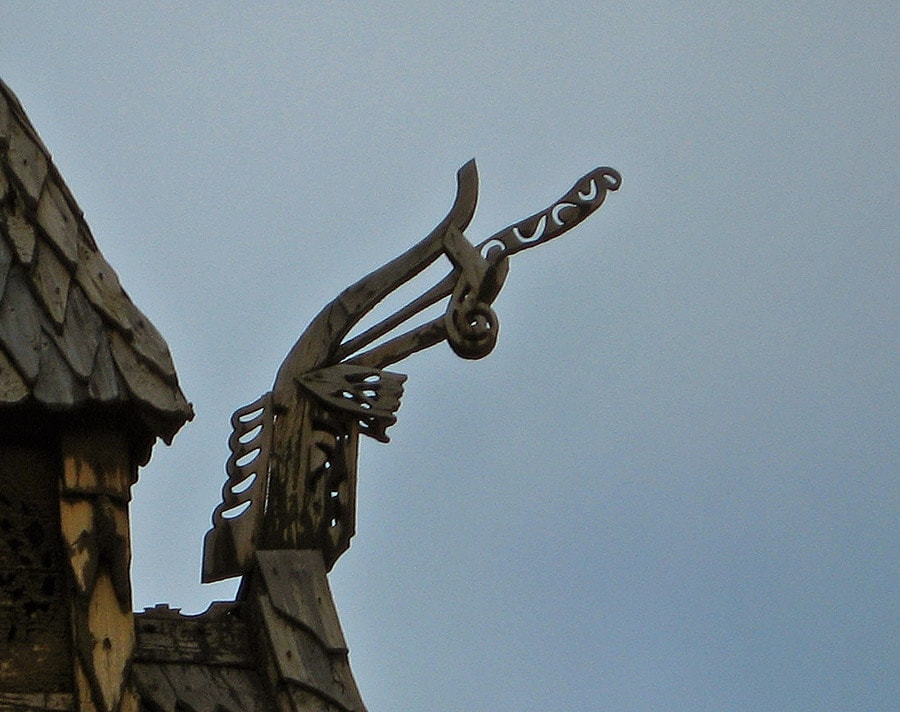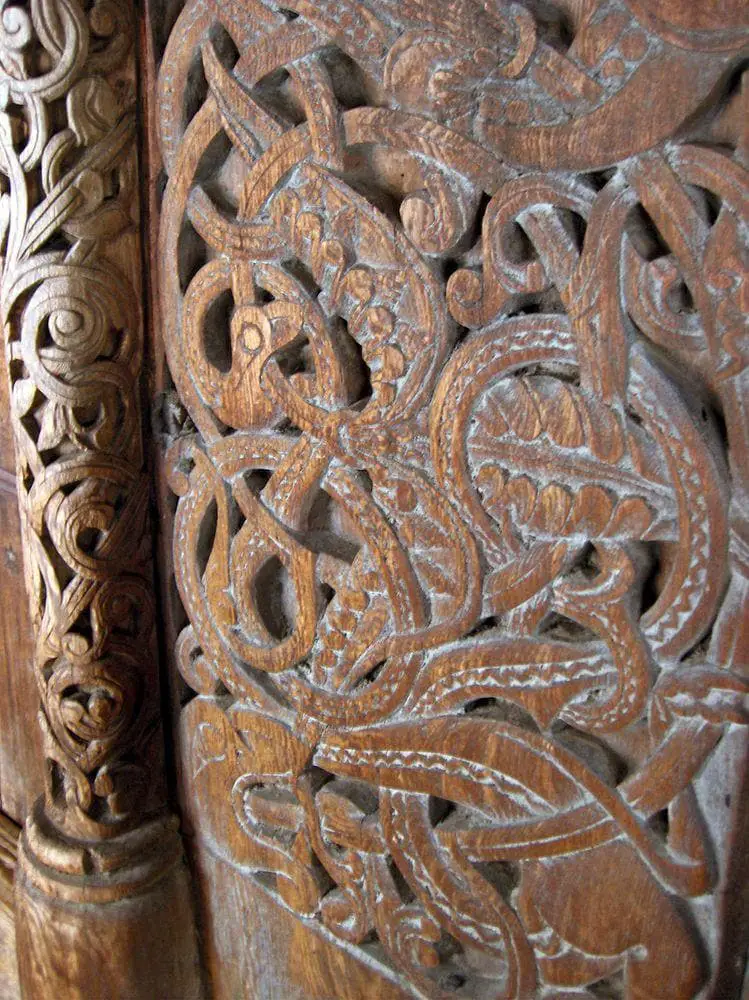Churches 🢔 Religious architecture 🢔 Architectural wonders 🢔 Categories of wonders
Wonder
Borgund stave church
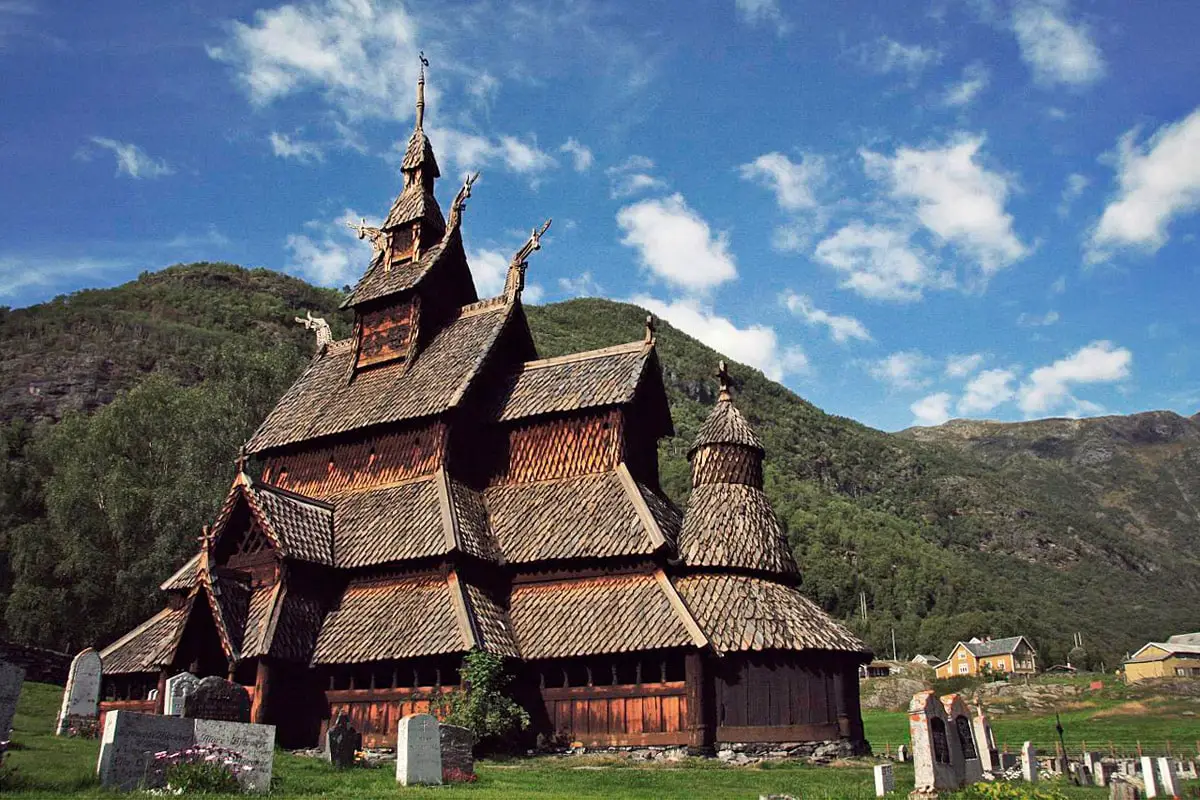
 In short
In short
The best preserved and most authentic stave church is Borgund stave church in Norway. This beautiful wooden building was constructed in the time period between 1180 and 1200 AD.
 52.3%
52.3%
GPS coordinates
Name in Norwegian (Bokmål)
Architectural style
Year of construction
Branch of Christianity
Map of the site
If you see this after your page is loaded completely, leafletJS files are missing.
 In detail
In detail
Stave churches
In countries where good quality wood is abundant, people developed outstanding skills to use this material in construction. History has shown that in the hands of artisans, wood becomes just as hardy and durable a construction material as stone and bricks.
The style of stave churches developed mostly in the 11th – 14th centuries. Specialists consider that this style was widespread in Scandinavia (thousands of buildings), and a similar style of construction was used in Britain too.
Stave construction is not exactly architecture style but rather a specific construction solution, which is repeated in many churches – buildings that had to be large, representative, and long-lived.
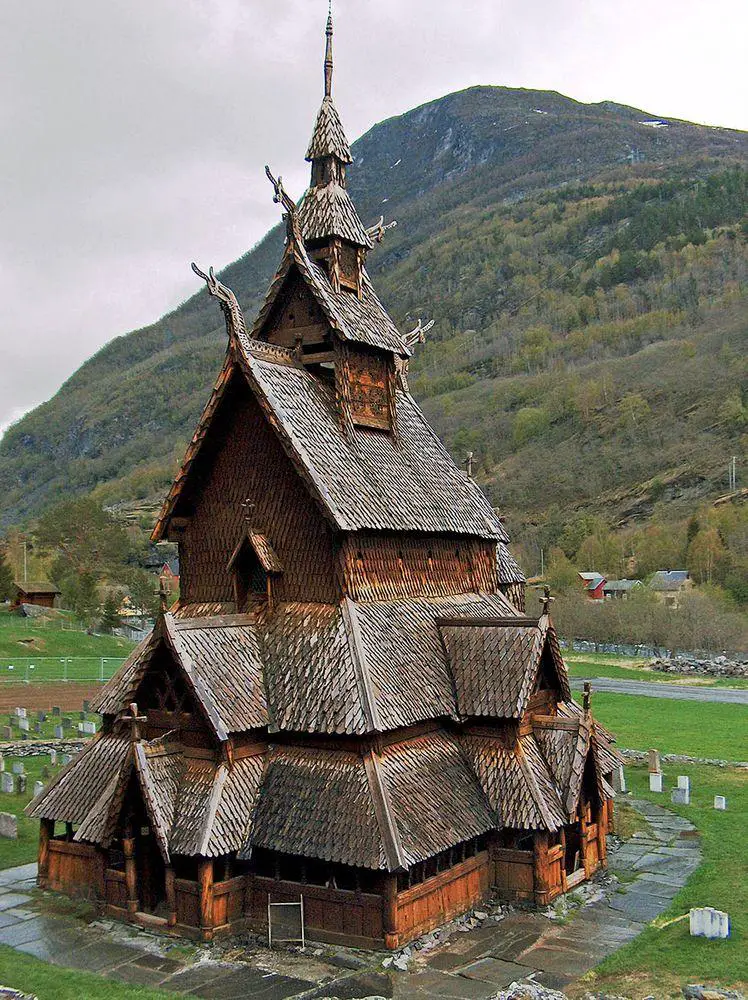
This construction method replaced earlier, less successful construction methods – palisade and post constructions, where the wooden posts were driven right into the soil. These constructions were not long-lived – wood deteriorated in some decades (in exceptional cases – centuries) due to rot.
In well constructed stave church the wooden construction rests on a massive sill frame, which stands on the top of a stone foundation. If the material is well prepared and the construction is well made, the building stands for many centuries. The name of the building comes from staves – massive corner posts.
Other parts of the structure – walls, and roof – also required many skills. Norse people acquired this knowledge in long centuries of intense shipbuilding and construction of longhouses. An integral part of stave churches is exquisite woodcarving – a paragon of Norse design.
Church building "program"
Construction of Borgund church marks an important period in the history of early Christianity in Scandinavia. In 1153 Norway became a separate province of the church, with a center in Nidaros – contemporary Trondheim.
An impressive movement of church building started in Norway.
Most Norse did not live in large towns – they preferred to live in countless small villages spread around fiords. Due to this had to be built not a few large churches but a large number of smaller ones.
Design of stave churches was best suited for this. Over some decades there were built hundreds (if not thousands) of these churches all around Norway. It shows that Norse people had lots of skilled carpenters – hundreds of churches were standing up to the 19th century and exquisite woodcarvings are admired up to this day.
Borgund
Borgund St. Andrew’s stave church was built in the beautiful, forested Lærdal valley in the time period between 1180 and 1200 (some mention that it was built before 1150). In medieval times an important track was going through this village.
It was not the first church here – research shows that it was built on the site of an earlier wooden church. It is well possible that it stands in the place of an older paganic holy place.
This well-built church has side aisles, a chancel, and an apse, it was embellished with an external gallery. The roof is securely held by scissor beams – another important detail of stave churches.
Originally the roof was covered with horizontal boards, and shingles became popular later.
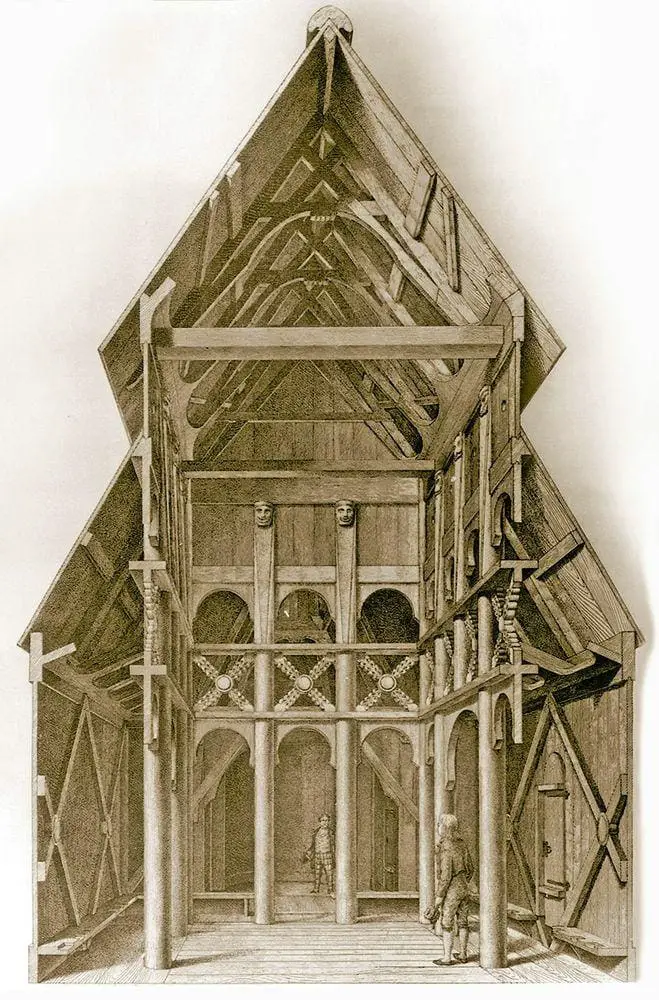
Church is lavishly ornamented with woodcarvings. Best known are four dragon heads on the gables of the roof which are similar to carved dragon heads of Norse ships.
Originally there were no windows – these were installed after the Reformation in 1537, in order to allow people to read psalms inside the church.
Part of the original decorations has been lost. Earlier the church was painted – in the choir are visible traces of the original painting.
Church could serve up to 300 people. In written sources, it was first mentioned in 1320, when urgent repairs were needed.
Runes
On the walls of the church at the west portal are found several runic inscriptions – in this respect, this is the most interesting stave church in Norway.
At the north portal is a runic inscription, carved by Þórir and testifying that paganic beliefs still were alive: "Þórir carved these runes on the eve of Olaus-mass, as he traveled past here. The norns presented measures of good and evil, great toil … they created before me."
Another runic inscription reads simply – "Ave Maria".
Later history
In 1349 Black Death came and afterwards for two centuries Norway was very poor and almost no churches were built.
As the centuries passed, elsewhere new architectural styles came in trend and new churches were built. Only in the 19th century, as Norway gradually became more affluent, it was decided to remove the outdated wooden churches and build new ones.
Happily 28 stave churches have been preserved up to this day – 25 stand in their original place. Also in Borgund – although a new wooden church was built nearby in 1868, the beautiful old church was kept. It was purchased in 1877 by the ancient monument protection society (Fortidsminneforeningen).
Today Borgund stave church is a very popular tourist destination. This causes problems too – walking has worn out the details of the building – but people really enjoy this pine-scented, ancient building.
Details and construction techniques of this building serve as a model for reconstruction in other stave churches and inspiration for replicas around the world.
 Linked articles
Linked articles

Wonders of Norway
The highlights of Norwegian natural and cultural heritage are the beautiful fiords with extremely tall waterfalls and cliffs as well as the unique medieval architecture.
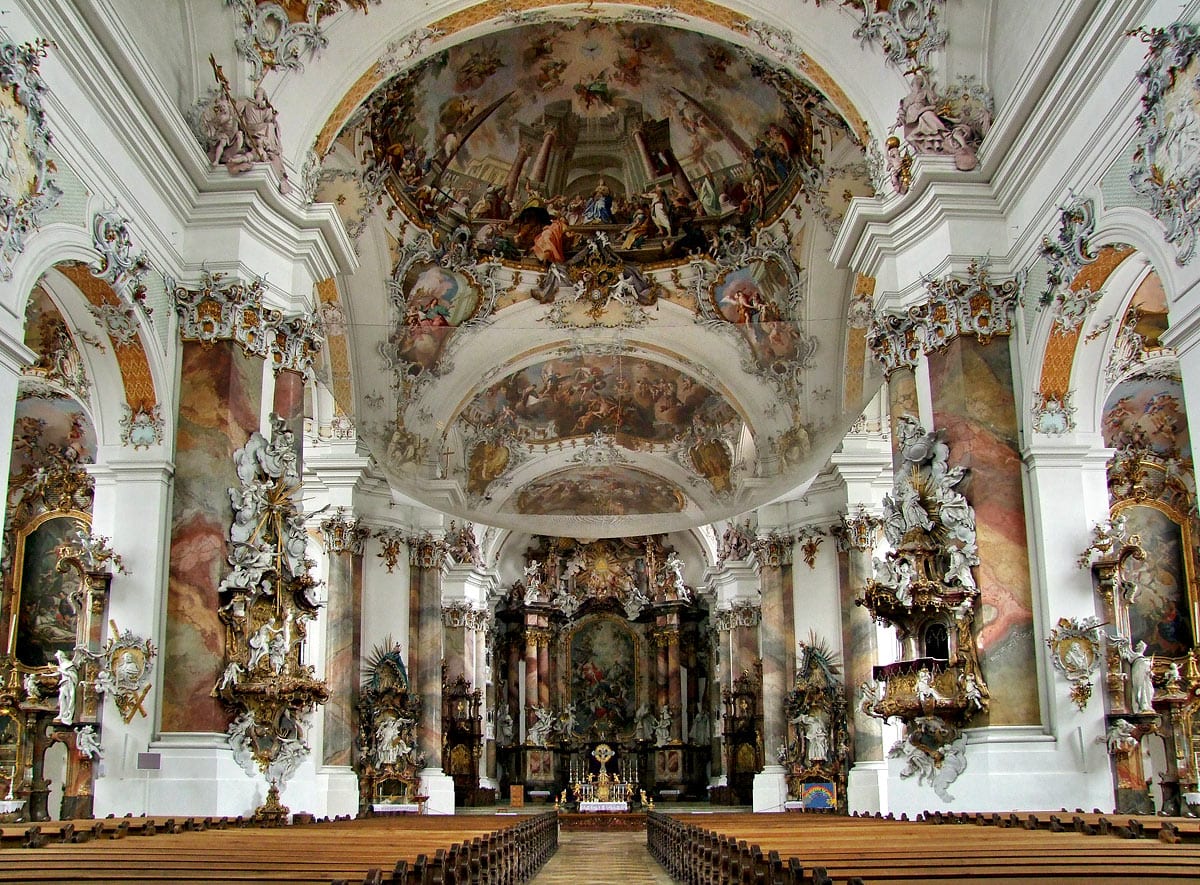
Churches
Throughout the millennia Christian churches have been the epitome of architecture and arts achievements in Western culture.

Religious architecture
Since ancient times human talents and skills have been expressed in religious architecture and arts, and traditions and rituals have evolved around pilgrimage sites. Religious buildings represent a major part of the highest achievements in architecture and crafts.
 Recommended books
Recommended books
Norway’s Stave Churches: Architecture, History and Legends
The Norwegian Stave Churches are unique – there are no structures like them anywhere in the world. They possess a striking individuality, a character that is distinctively Norwegian. One cannot enter a stave church without being overwhelmed by a feeling of awe.

